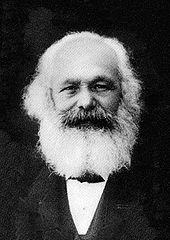I love D&D, and it’s that love that makes me, a fourth edition player, so delighted to delve into the secrets of OD&D and Dave and Gary’s campaigns. As Mike said, understanding history is all about context. There are so many charming, inexplicable mysteries in D&D, from the baffling stone head in Greyhawk to the puzzle of what the heck hit points represent. I can bring my own context to them, but I think I need to have some understanding of those first games in order to know just what the heck my D&D is about.
It’s hard to get that context just from reading the original Dungeons and Dragons books. If nine groups learned D&D from the books, they’d end up playing nine different games.
Mornard told us about an early D&D tournament game – possibly in the first Gen Con in Parkside in 1978? Gary Gygax was DMing nine tournament teams successively through the same module, and whoever got the furthest in the dungeon would win. You’d expect this to take all day, and so Mike was surprised to see Gary, looking shaken, wandering through the hallways at about 2 PM. Mike bought Gary a beer and asked him what had happened – wasn’t he supposed to be DMing right now?
“It’s over!” replied a stunned Gary Gygax.
Gary described how the first group had fared. Walking down the first staircase into the dungeon, the first rank of fighters suddenly disappeared through a black wall. There was a quiet whoosh, and a quiet thud. The players conferred, and then they sent the second rank forward, who disappeared too. The rest of the players followed.
The same thing happened to the next tournament team, and the next. Players filed into the unknown, one after another. And they were all killed. The wall was an illusion, and behind it was a pit. Eight out of the nine groups had thrown themselves like lemmings over a cliff; only one group had thought to tap around with a ten foot pole. That group passed the first obstacle, so they won the tournament.
Gary and his players couldn’t believe that the tournament players had been so incautious. But, to be fair, none of those tournament groups had played in Gary Gygax’s game. They had learned the rules of D&D, but they had no experience of the milieu in which the book was written. Of those nine groups that had learned D&D from a book, only one played sufficiently like Gary’s group to survive thirty seconds in his dungeon.
In OD&D, there’s no guarantee that things are fair. One of Gary’s and Rob Kuntz’s favorite stories, says Mornard, was Clark Ashton Smith’s The Seven Geases, in which (spoilers ahead) the hero survives a horrible death at the hands of seven different monsters only to die meaninglessly slipping from a ledge. That was one of the seminal texts of D&D, said Mornard, and one of the stories it was designed to model. “The story that D&D tells,” said Mike, “is the story of the world. Heroes aren’t invincible.”
That’s a long way from the Fourth Edition ethos. In 4e, it takes a long time to make a character, and so you’re invested in him before he’s downed his first kobold. If your 4e character is killed, you can be sure he’ll get a chance to put up a good fight first.
Not in 0e. Characters died all the time. That’s why Gary Gygax’s characters got names like Xagyg the wizard and Yrag the fighter, and other players contributed Melf the Elf, or (if I remember Mike’s anecdote correctly) Bellus of Telefono. It was the sixties and seventies. Life was cheap, and heroes died.
That’s all scary stuff to hear from your DM right before he runs your thief through a dungeon.
Next blog post: My thief explores one of the classic D&D dungeons.









1) Minor point. It’s “Mornard” with 2 ‘R’s. It was emphasizing this more and more to Gary that eventually got one of my characters named ‘Lessnard’, but that’s another tale.
2) Belric of Telephone, (accent grave over the last e — “Telephonay”.) A play on Michael Moorcock’s “Elric of Melnibone”.
Oops! I fixed the spelling. At least my mistake elicited that bonus story
I am getting a lot of joy out of this peek into D&D’s history. As a DM who has learned a lot from this blog, I can’t wait to build a party that shows the same level of adventurousness and affability as the game’s pioneers!
HA! That must have sucked. Waiting to play with the father of gaming only to die at the first trap. “Yeah, back in the 70s I played with Gary…for about one minute….Was awesome!” 😉
[…] on “original Dungeons & Dragons” as a name, however, both myself and Paul Hughes (here and here) have been eagerly sharing the lore Mike is helping bring out from behind an undesired […]
Oh, and in case it’s not clear, there were 9 referees, one for each team. So it’s NOT a case of somebody describing something badly.